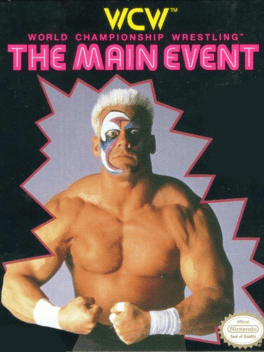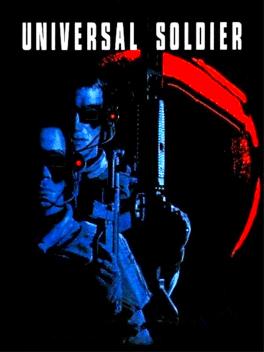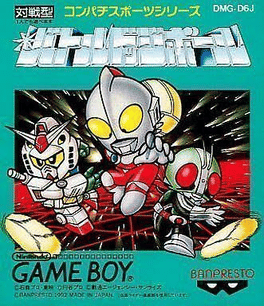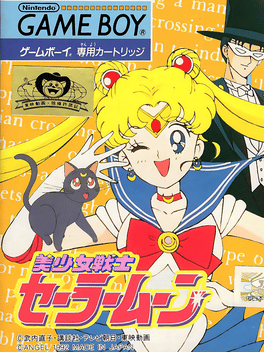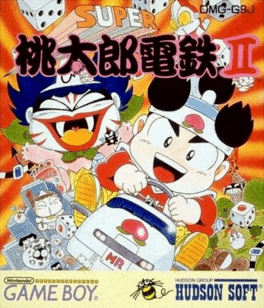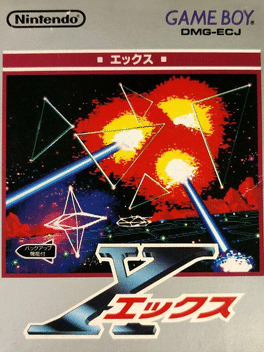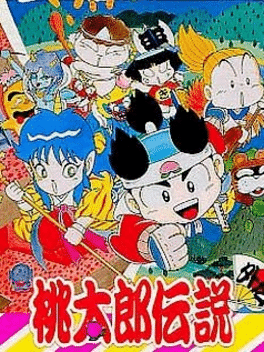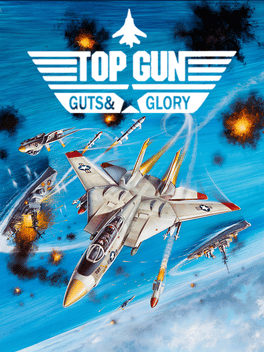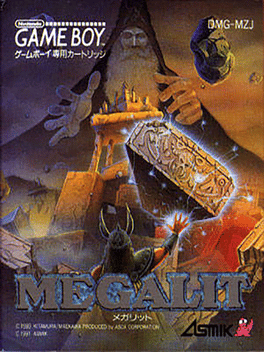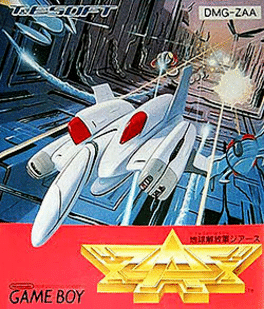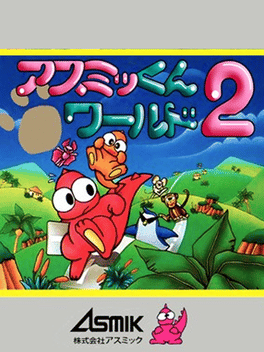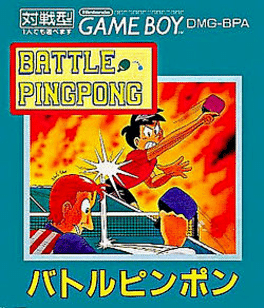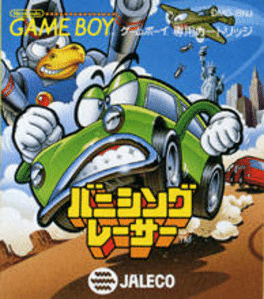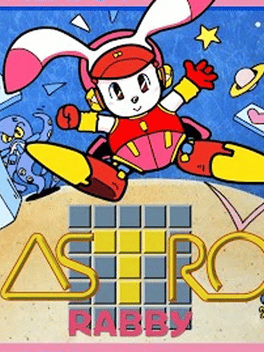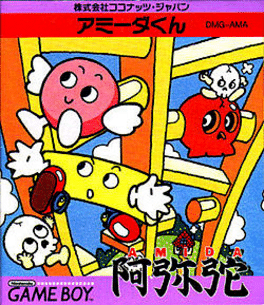Most Popular Game Boy Games - Page 49
-
WCW: The Main Event
1994
WCW: The Main Event
1994
WCW: The Main Event is a professional wrestling video game. Choose your fighters among top-ranked superstars. Each wrestler has his unique special move along with punch, clothesline, bodyslam, suplex, dropkick, and cross body block. Use your unique abilities to fight in one of two match types to maybe even throw one's opponent out of the ring! -
Disney's Mulan
1998
Disney's Mulan
1998
As Fa Mulan you will follow the storyline of the Disney animated movie starting from army training. You will progress through other scenes, like avoiding detection, saving Shang, sneaking past the Mongol army, getting through the palace and stopping Shan Yu. This is a scrolling game with some puzzle elements. You can throw things at enemies to stun them but this is not a shooter. Mostly, you are trying to make your way past an enemy to achieve your goal. -
Pierre le Chef is... Out to Lunch
1993
Pierre Le Chef is famed worldwide for his mouth-watering recipes involving the freshest ingredients. So, when the vegetables start attempting to run away from him, he has no choice but to chase after them. Out To Lunch is a platform game set across 6 countries, starting off in Switzerland and finishing in Paris. To recollect the vegetables he must first stun them, either by firing at them or jumping on them, then walk over them, in a manner similar to Fire & Ice. Unusually, the game was converted from the SNES to the Amiga, not the other way around. -
Universal Soldier
1993
Universal Soldier
1993
Based on the major motion picture, this awesome action adventure takes you from the steaming shell-pocked jungles of Southeast Asia to laser-seared battlefields at home. You are a perfectly engineered Universal Soldier with extraordinary skills and powers - locked in mortal combat against your old Vietnam foe, the villainous Sergeant Scott. You are both "Ultimate Fighting Machines", but only one of you can survive! -Are you strong enough to conquer ten incredible locations? -Your arsenal includes Triple Beam Lasers, Land Mines and a special Chaos Weapon. -
Battle Dodgeball
1992
Battle Dodgeball
1992
A crossover combat dodgeball game featuring characters from Mobile Suit Gundam, Ultraman and Kamen Rider. Similarly to Technos's Super Dodge Ball, each combatant has a health meter which depletes whenever they are hit by the dodgeball. Stronger throws cause more damage and once a character's HP is depleted, they leave the arena. -
Bishoujo Senshi Sailor Moon
1993
Bishoujo Senshi Sailor Moon was a video game developed by Arc System Works and published for the Nintendo Game Boy by Angel (Bandai) in 1992. It was one of the first Sailor Moon-related video games to be released. In this game, the player controlled Usagi Tsukino/Sailor Moon. The storyline was based on the first, third, and fourth episodes of the first season of the anime. Although they originally had not yet appeared in those episodes, in the game Usagi could meet and talk to Ami and Rei, who were NPCs (non-player characters). The three levels were divided into two parts. First, Usagi could walk through the city, school or a health spa, occassionally talking to people. After talking to the right people, Usagi turned into Sailor Moon and entered another kind of level in which she fought numerous enemies. By default, Sailor Moon could only use kicking attacks. Pressing the "down" button would make Sailor Moon sit down and cry, and if there were rocks on the wall nearby, her high-pitched crying would make the rock -
The Shinri Game
1993
The Shinri Game
1993
The Shinri Game is an Adventure game, published by Visit, which was released in Japan in 1993. -
Super Momotaro Dentetsu II
1994
Super Momotaro Dentetsu II is a Miscellaneous game, developed by Make and published by Hudson, which was released in Japan in 1992. -
X
1992
-
Momotaro Densetsu Gaiden
1991
A spin-off of Hudson's Peach Boy RPG series that focuses on three side characters instead. Momotarou Densetsu Gaiden ("Peach Boy Legend Side-Story"), known as Momotarou Densetsu Gaiden: Dai 1-Shu ("Peach Boy Legend Side-Story: Volume 1") for PC Engine, is a non-core entry in Hudson's Momotarou Densetsu series of RPGs loosely inspired by the titular folklore figure. It was first released on the Game Boy in 1991, and then ported to the PC Engine the next year and the Famicom the year following that. The game switches focus from Momotarou to three extra characters, each has their own distinct campaign to play through. One follows a standard RPG route of a hero's journey, another involves the princess of the kingdom of demons as she attempts to uncover an attack on her father's throne with a band of allied monsters, and the third involves a thief who steals money from monsters and gives it to beggars. Each campaign follows the core gameplay of the series: overworld exploration and turn-based combat. -
Top Gun: Guts and Glory
1993
Top Gun: Guts and Glory is a modern jet flight simulation that was released in 1993 for the original Nintendo Game Boy in Europe and North America. This video game is loosely based on the Top Gun film featuring Tom Cruise. Basically controlling a cutting edge U.S. Aviation based armed forces stream through ten levels, players must take out adversary jet fighters while withstanding enemy ships. Airplanes that can be picked include the F-14 Tomcat, the F-117A Nighthawk covertness contender, the F-16 Fighting Falcon, and the Soviet-made MiG-29 Fulcrum. Players can either commit themselves to a long career mode, take part in a snappy air battle meeting, or go on a bombarding run. Passwords help store the player's advancement in career mode. Because of different constraints found on the first Game Boy framework, the player can just observe and battle against two enemy airplanes at once. -
Megalit
1991
Megalit
1991
When a wicked witch decides to rule the world with the power of her magic jewels, her terrifying plot leads her to kidnap elves, princesses, and even fairies. You're the brave warrior who's decided to save all the captured innocents, but the witch gets wind of your plan and turns you to stone. Now, your efforts turn to breaking the spell, which is going to require cracking the ancient puzzle of Megalit. If the princesses and magical beings stand any chance of making it out of the witch's clutches, you'd better solve the code quickly. -
Chikyuu Kaihou Gun ZAS
1992
A Vertical Scrolling shooter/shmup released only in Japan. It's notable for using the DMG Game Boy's passive-matrix image retention/ghosting to simulate transparency and multiple layers of parallax. -
Asmik-kun World 2
1991
Asmik-kun World 2
1991
Asmik-kun World 2 (アスミッくん ワールド 2 Asumikkun Wārudo 2) is a Game Boy video game by Asmik, copyrighted in 1991.Unlike its predecessor, Boomer's Adventure in ASMIK World (Teke! Teke! Asmik-kun World), this game was never released outside Japan. Like its predecessor, the game is an excellent example of the trap-em-up genre, which also includes games like Heiankyo Alien and Space Panic. In the game, Asmik-kun has to build a "road" from the entrance to the exit in each level. An enemy has come to kidnap the children on a certain world and the "roads" are intended for the children to be rescued and escorted safely back home. -
Battle Pingpong
1990
Battle Pingpong
1990
Battle Ping-Pong is a Game Boy game revolving around ping-pong (or table tennis as it is generically called). One person on either side of a small table with a net return a ball back and forth in a rally until the ball is either dead in play or bounces off the table. -
Battle of Kingdom
1991
Battle of Kingdom
1991
Battle of Kingdom is a 1991 Game Boy video game that was jointly created by the Meldac, Live Planning, and the Lenar companies. It was only released for a Japanese market. The object is to lead a kingdom through various battles using the format of a traditional board game. In order to advance to the next battle, players must destroy at least 92% of the monsters on the battlefield. Each stage represents a battle in a high fantasy campaign to save the world from an unknown evil force (that resides in a skull castle). -
Banishing Racer
1991
Banishing Racer
1991
Banishing Racer (バニシングレーサー?) is a Japanese platforming video game developed and published by Jaleco Entertainment for the Game Boy exclusively in Japan. It was released in Japan on July 26, 1991. Banishing Racer was also sold around Hong Kong. The game allows the player to take control of an animated car against numerous enemies that must be jumped on to defeat, in a fashion similar to Super Mario Land. The player has three lives before being allowed to continue or start over. One hit kills the player and forces a restart from the beginning of the level. The car model used within the game looks very similar to a Subaru 360. -
Astro Rabby
1990
Astro Rabby
1990
Astro Rabby is an action video game developed by Cyclone System and published by Information Global Service (IGS) for the original Game Boy exclusively in Japan on October 12, 1990. It is the first Game Boy title to be published by that company. The game puts you in control a of Rabby, a robotic bunny, who's goal is to recover stolen parts for his creator, Doc, that were taken by the Dortoise Troops. Doc's dream is to utilize the parts to allow Rabby to fly freely. The game is a top-down, vertically scrolling action game that can be considered a precursor to the Jumping Flash series. The player must jump along platforms in search of a heart, which will allow the player to upgrade Rabby and proceed on to the next level. A level will loop indefinitely until the heart is found. -
Amida
1990
Amida
1990
Amida is a Japanese ladder climbing puzzle video game. The game requires players to navigate the main character safely across several pre-set bridges. Each bridge is composed of a number of obstacles that the character will blindly navigate into. The player can utilize an animated platform to redirect the main character as they move through the stage.
